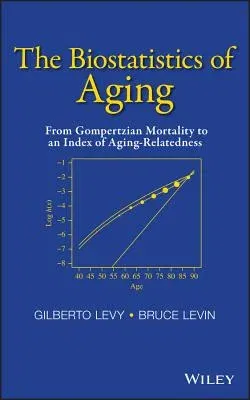A practical and clarifying approach to aging and aging-related
diseases
Providing a thorough and extensive theoretical framework, The
Biostatistics of Aging: From Gompertzian Mortality to an Index of
Aging-Relatedness addresses the surprisingly subtlenotion--with
consequential biomedical and public health relevance--of what it means
for acondition to be related to aging. In this pursuit, the book
presents a new quantitative methodto examine the relative contributions
of genetic and environmental factors to mortality anddisease incidence
in a population.
With input from evolutionary biology, population genetics, demography,
and epidemiology, this medically motivated book describes an index of
aging-relatedness and also features:
- Original results on the asymptotic behavior of the minimum of
time-to-event random variables, which extends those of the classical
statistical theory of extreme values
- A comprehensive and satisfactory explanation based on biological
principles of the Gompertz pattern of mortality in human populations
- The development of an evolution-based model of causation relevant to
mortality and aging-related diseases of complex etiology
- An explanation of how and why the description of human mortality by
the Gompertz distribution can be improved upon from first principles
- The amply illustrated analysis of real-world data, including a program
for conducting the analysis written in the freely available R
statistical software
- Technical appendices including mathematical material as well as an
extensive and multidisciplinary bibliography on aging and
aging-related diseases
The Biostatistics of Aging: From Gompertzian Mortality to an Index of
Aging-Relatedness is an excellent resource for practitioners and
researchers with an interest in aging and aging-related diseases from
the fields of medicine, biology, gerontology, biostatistics,
epidemiology, demography, and public health.

